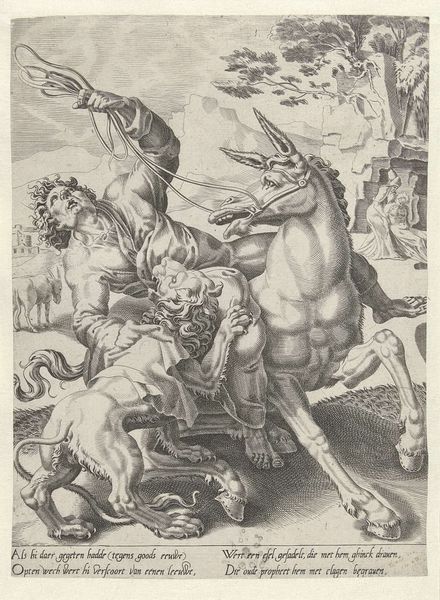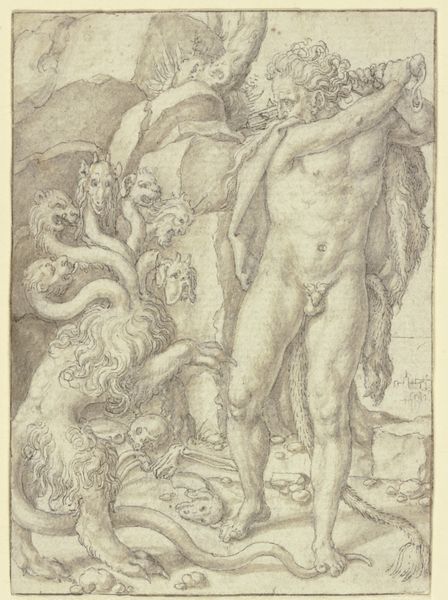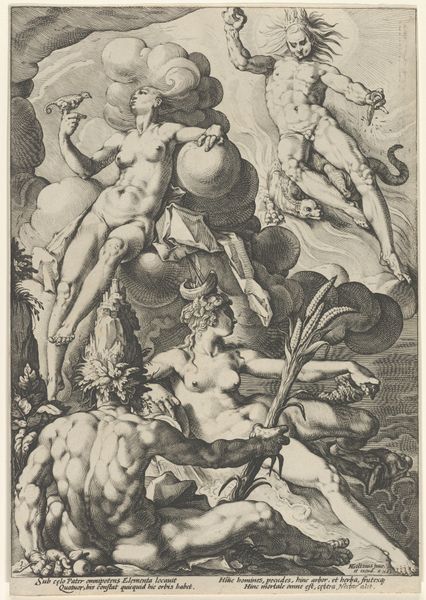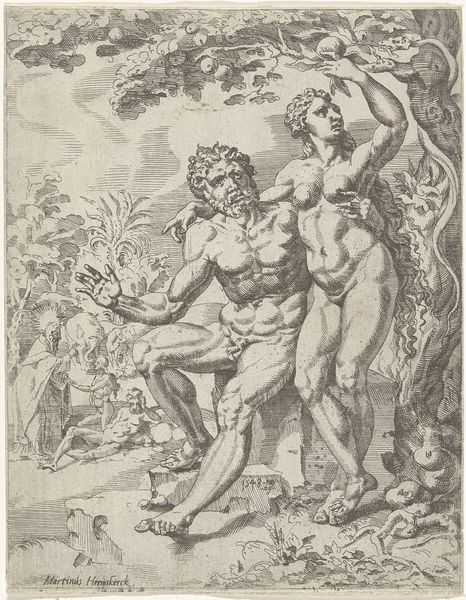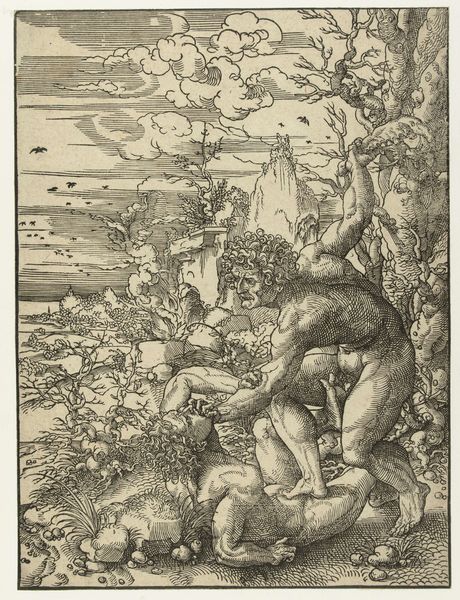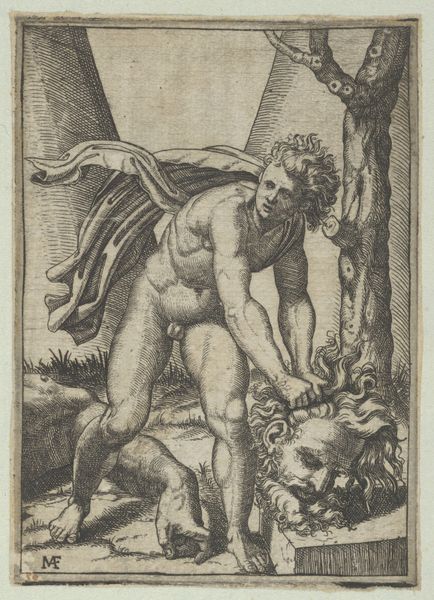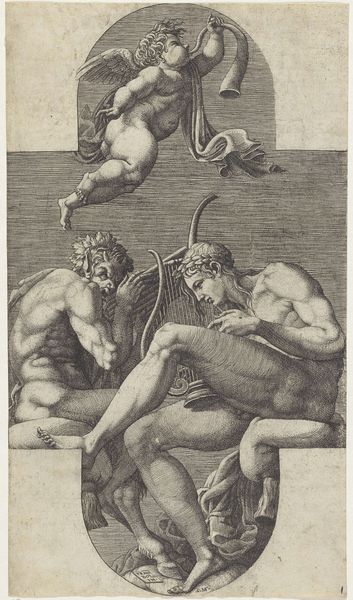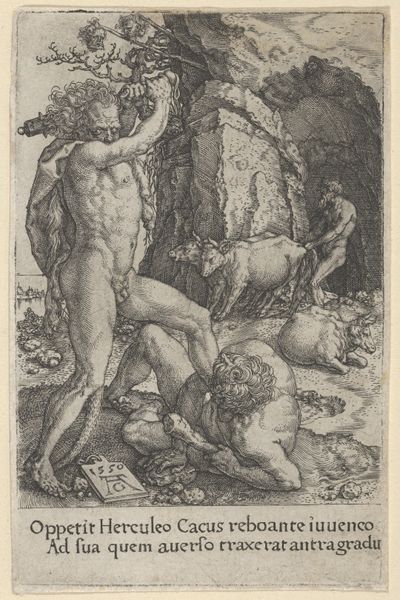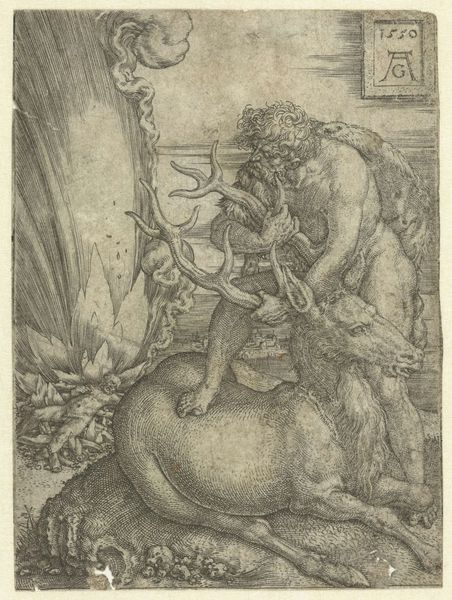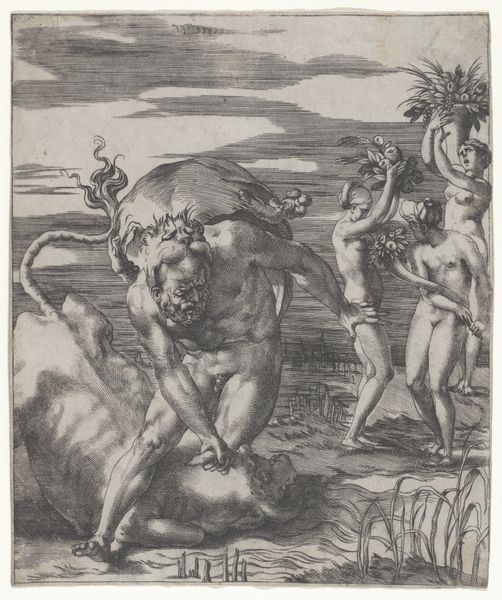
Hercules and the Nemean Lion: Hercules grasps the shoulders and chest of the lion, which is viewed from the back, beside a rocky outcrop 1530 - 1587
0:00
0:00
drawing, print, engraving
#
drawing
# print
#
figuration
#
11_renaissance
#
personal sketchbook
#
history-painting
#
italian-renaissance
#
engraving
Dimensions: plate: 8 5/16 x 5 1/2 in. (21.1 x 14 cm) sheet: 8 1/2 x 5 11/16 in. (21.6 x 14.5 cm)
Copyright: Public Domain
Curator: This engraving, attributed to Adamo Scultori and created sometime between 1530 and 1587, depicts Hercules and the Nemean Lion. It's quite a striking composition. Editor: Indeed. The initial impression is one of immense physical exertion. Both figures are intensely engaged, their forms almost melded together. There is a sense of contained violence within the frame. Curator: I'm drawn to the artist's use of line. Notice how the density of the cross-hatching defines the musculature of both Hercules and the lion, giving them a sculptural quality. The tonal variations achieved through the engraving technique are really quite remarkable. Editor: Symbolically, the Nemean Lion represents primal, untamed nature, and Hercules' victory over it signifies the triumph of reason and order. This iconography was potent in the Renaissance, reflecting humanism's emphasis on human capability and moral strength. The visual metaphor of man subjugating beast is very strong here. Curator: Look at how the bodies are interwoven. It's a dynamic composition, full of implied movement, with a circular flow leading the eye around the image. The rocky outcrop and tree behind them function almost as framing devices, anchoring the struggle. Editor: Consider too, how the myth of Hercules resonated with the aspirations of the Renaissance. His labors weren't just feats of strength, but moral tests that demonstrated fortitude. The image encapsulates ideas about courage, perseverance, and human potential. Curator: Absolutely. The formal structure reinforces this. It presents the viewer with clarity and balance, which are traits mirroring the thematic victory of reason over the unkempt nature of the beast. Editor: Thinking about the enduring power of visual symbols is always worthwhile when discussing works like this. What does it say that we can look at this engraving centuries later, and still read its central narrative and moral meanings so vividly? Curator: Well, I found it incredibly useful to consider how line, tone, and composition all combine to enhance and support the emotional weight and underlying themes of a monumental trial and accomplishment. Editor: And, as an iconographer, the layers of symbolic depth continue to be a rewarding focus, illustrating both classical and humanistic concerns over the ages.
Comments
No comments
Be the first to comment and join the conversation on the ultimate creative platform.

